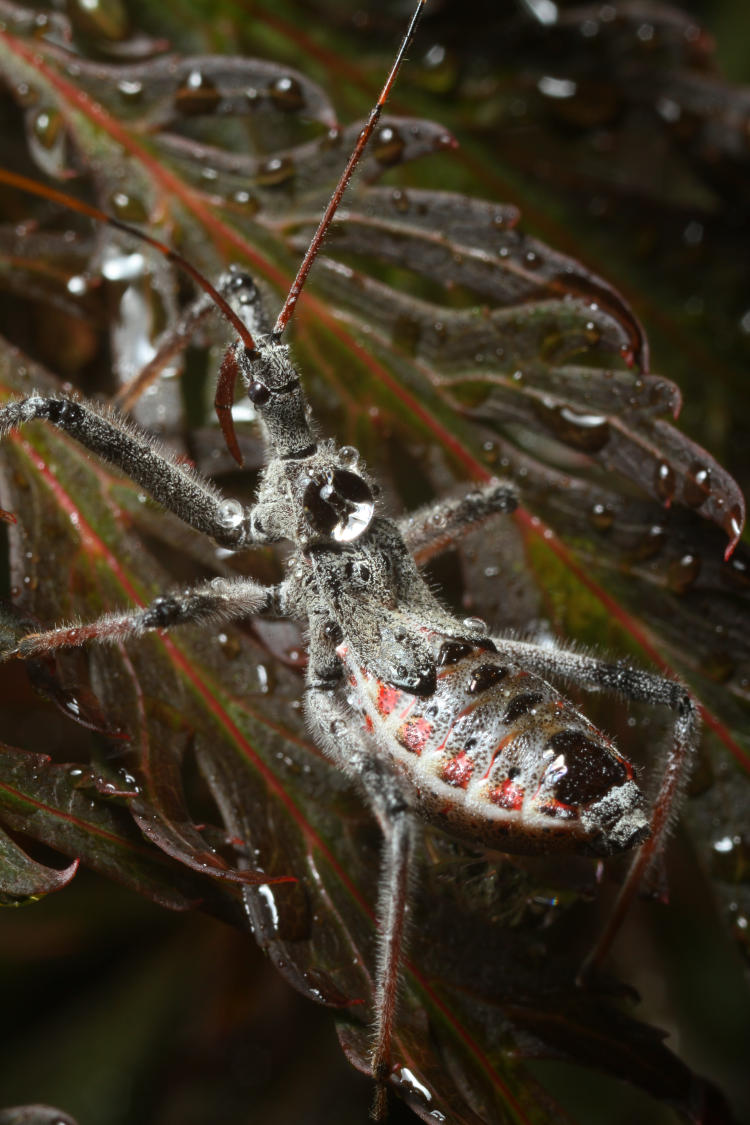Last night, the rains finally came through, mostly sideways, and it’s safe to say we’re saturated now. The treefrogs were signaling their approval even before it started, while remaining mostly out of sight (yes, even to me,) but they prompted me to go out after it stopped, just barely into this morning now, and look around a bit. I got no photos of the frogs, but found a couple of other subjects to tackle.

Above, our ginkgo tree (Ginkgo biloba,) newly transplanted in the yard, was demonstrating the faint hydrophobic properties of its leaves. Ginkgos are often called living fossils, which is nonsense, but they are the only members of the Order Ginkgoales, which appears (through actual fossils) to date back to the middle Jurassic period – the structure of the leaves is pretty distinct, as you can see here: no branching, just the veins all originating from the stem itself. At some point I’ll be posting a little more about them, but right now we’re pleased to have one in the yard.
Out front, other things could be found.

This leafhopper was out within easy reach, but small, and my attempts to snag a sharp portrait with the reversed 28-105 didn’t quite nail it. This still illustrates the red color the eyes turn at night (much like the mantids, but theirs turn black,) and the raindrops, but that milky one isn’t rain, it’s leafhopper excrement. I know, right smack in our yard with no one around to scoop it. Class.
The real subject, the one that made me get the macro rig in the first place, was out on the big Japanese maple.

I’d initially seen this juvenile wheel bug (Arilus cristatus) on the underside of the leaves, so white that I mistook it for the molted skin of a katydid, but when it had moved up top I could see the myriad raindrops adhering to it and knew I had to get some pics, especially since wheel bugs are almost fearless and thus easy to work with. This meant I could go in close.

All those hairs help suspend the water drops away from the body, and likely help repel parasites. The huge proboscis down there distinguishes this as a serious predator, which I’ve photographed before. But let’s go in for the real closeup.

The luck that I didn’t have with the leafhopper came through here, in that we can see the eye facets as well as the magnifying properties of the raindrops – this is a little below full resolution. For the record, this specimen was less than 20mm in length, far smaller than an adult. And note the reflection of the round face of the macro softbox in all shiny surfaces in these images, visible once I point it out but otherwise subtle enough to escape attention most of the time, the reason I made sure the illuminating aperture was round; the rectangular highlight of a typical strobe becomes noticeable because it’s unnatural-looking. I’m still trying to balance an ‘even’ light source with the reduction in power that it will entail, because diffusing it more for a uniformly white circle will reduce what makes it to the subject, and I don’t need that. As always, modifications and refinements go on.



















































